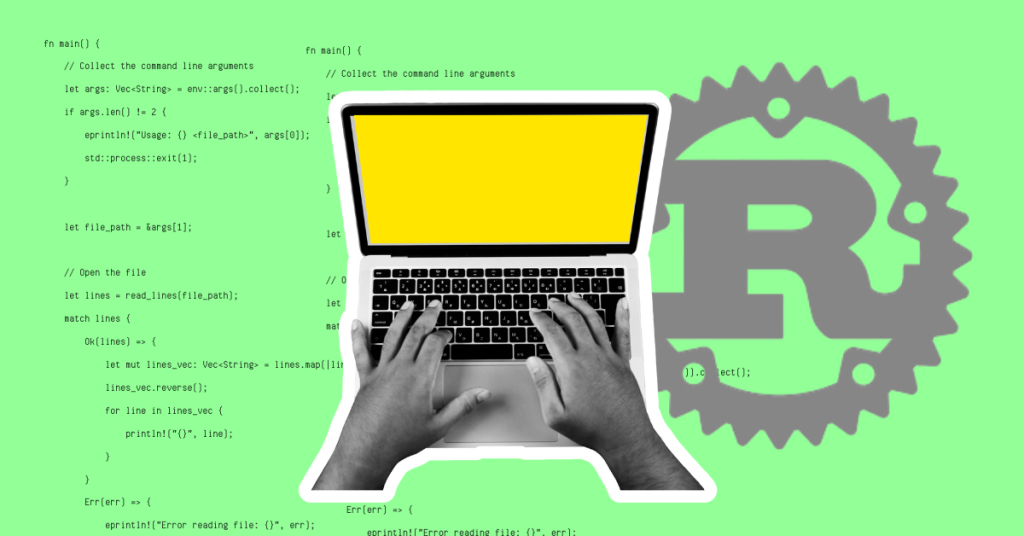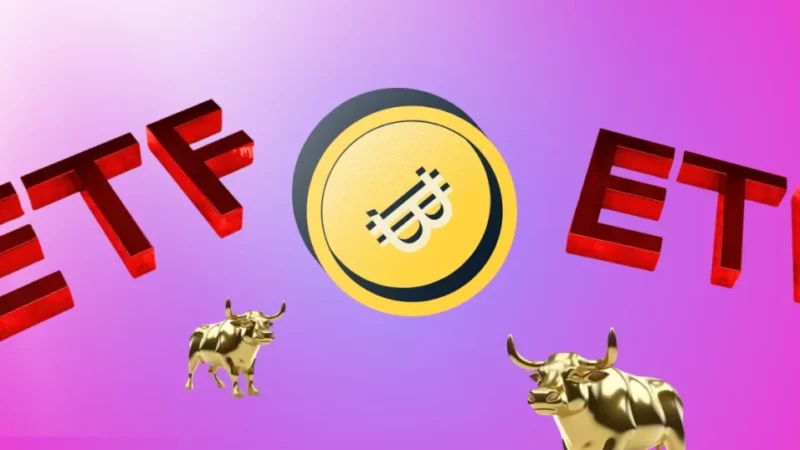Why Rust Programming Language is the Go-To for Blockchain Innovation


The post Why Rust Programming Language is the Go-To for Blockchain Innovation appeared first on Coinpedia Fintech News
Introduction
In a world where digital security and performance are paramount, innovation drives our technological advancements. Curious about what fuels this digital revolution?
You’re right on target—it’s Rust! This powerful programming language is revolutionizing blockchain development. In this article, we’ll delve into the significance of Rust and its pivotal role in shaping leading blockchains like Solana and Polkadot.
What is Rust?
Rust is a statically typed systems programming language created by Mozilla Researcher Graydon Hoare in 2010. It’s a multi-paradigm language known for its efficiency in memory management and its focus on safety, concurrency, and performance. Rust allows developers to create fast, reliable software with robust memory safety guarantees. It incorporates various programming paradigms, including concurrency, functional, generic, imperative, and structured programming.
Why Rust Stands Out in Blockchain Development
Regarding blockchain development, Rust offers distinct advantages over other languages. Here’s why:
- Ease of Use and Implementation: Rust’s syntax is straightforward, making writing and implementing easier than many other languages.
- Self-Referential Compiler Libraries: Rust’s standard compiler libraries are written in Rust, with minimal reliance on C++.
- Memory Safety without Garbage Collection: Rust avoids needing a garbage collector, which can introduce runtime overhead, as seen in languages like Java. Instead, Rust provides robust memory management, minimizing bugs and null pointer issues.
The Advantages of Rust’s Memory Management
While garbage collection has perks, it often leads to undesired runtime overhead. Rust’s approach eliminates garbage collection and ensures efficient memory usage and high performance. This makes Rust fast and a strong contender against languages like C++.
Rust benefits from a vibrant community and a growing ecosystem, offering a wealth of resources, libraries, and tools to support developers. This makes Rust an excellent choice for the demanding field of blockchain development.
Solana and Rust
Introduction to Solana
Solana, developed by Anatoly Yakovenko, was created to tackle the persistent scalability challenges blockchains face. To overcome these limitations, Solana introduced a groundbreaking feature known as Proof of History (PoH). This innovative approach allows Solana to process thousands of transactions per second, significantly enhancing user and developer experiences.
Proof of History is a record that verifies when an event occurred. By establishing a verifiable timestamp for each transaction, PoH removes the need for validators to coordinate and agree on transaction orders. This unique mechanism enables Solana to achieve high transaction speeds and efficiency, making it a powerful platform for decentralized applications with a network capacity of thousands of transactions per second (TPS).
Role of Rust in Solana
Thanks to its exceptional performance and scalability, Rust plays a crucial role in Solana’s architecture. Solana uses Rust to write its smart contracts and manage NFTs. Rust’s efficiency and reliability contribute to Solana’s ability to securely handle a high volume of transactions.
The language’s robust features ensure that Solana remains a leading blockchain platform, capable of supporting complex decentralized applications and maintaining high-speed transaction processing.
Getting Started with Rust on Solana
Ready to get your hands dirty? Here is a guide on how you can get started with Rust
- Setting up the development environment:
- Install Rust: Follow the official Rust installation guide: link
- Install Solana Cli: Follow the official documentation: link
- Basic tutorial on how to write and deploy simple smart contract:
// Rust smart contract for Solana
use solana_program::{
account_info::AccountInfo,
entrypoint,
entrypoint::ProgramResult,
pubkey::Pubkey,
};
entrypoint!(process_instruction);
fn process_instruction(
_program_id: &Pubkey,
_accounts: &[AccountInfo],
_instruction_data: &[u8],
) -> ProgramResult {
msg!(“Hello, Solana!”);
Ok(())
}
In the above code snippet the first subpart has all the necessary imports like account info, public key, entry point if the contract. Function process instruction is implemented when the contract is called. The msg seen as Helo Solana is displayed in runtime logs and the ok(()) signifies that the program is executed without any error.
Polkadot and Rust
Introduction to Polkadot
Polkadot, developed by Gavin Wood—co-founder of Ethereum—is a groundbreaking platform featuring its native cryptocurrency, DOT. Like Solana, Polkadot utilizes the Proof-of-Stake (PoS) mechanism. It’s built on the Substrate framework, crafted in Rust, highlighting Rust’s critical role in Polkadot’s ecosystem.
Polkadot enables seamless cross-chain transactions and messaging without the need for intermediaries. At its core is the relay chain, responsible for validating data, achieving consensus, and managing transactions. Surrounding the relay chain are user-created parallel chains known as parachains.
These parachains allow users to develop their own blockchains using Polkadot’s existing framework. Polkadot’s interoperability facilitates smooth interactions and transfers between different blockchains. Notable examples of parachains include Acala, Moonbeam, and Phala Network.
Role of Rust in Polkadot
Rust’s importance in Polkadot extends beyond its use in the Substrate framework. Its security enhancements and modularity drive the language’s adoption. Rust’s memory safety features are crucial for successfully implementing parachains and smart contracts, ensuring robust and reliable blockchain operations.
Getting Started with Rust on Polkadot
Let’s dive deep into the world of Polkadot and how Rust is implemented in deploying smart contracts and parachains. Here is a short guide for the same:
- Setting up the development environment: Tools required are Polkadot.js, Substrate, and IDE setup. The most popularly used IDEs are Visual Studio code, Atom, and IntelliJ IDEA.
- Install substrate
- Then Install Rust
- Install all the additional dependencies
- Setup Polkadot.js and create Node
- Configure the environment and launch the project in IDE.
- Basic tutorial on how to write and deploy simple parachain:
// Sample Rust parachain for Polkadot
use substrate_substrate_runtime::{
GenesisConfig, SubstrateModule,
};
pub struct MyParachain;
impl SubstrateModule for MyParachain {
fn genesis_config() -> GenesisConfig {
GenesisConfig::default()
}
}
The above code snippet is an example of parachain code. The first part is the imports, and then there is the defined struct MyParachain, which denotes a custom parachain. This is followed by the implementation block that calls the method GenesisConfig and returns the Genesis configuration, which is called when the first blockchain is set up.
Comparative Analysis: Solana vs. Polkadot
Let’s compare Solana and Polkadot, focusing on their key technical aspects, performance metrics, development ease, and use cases.
Technical Comparisons
- Consensus mechanism:
Solana: Solana employs Proof of History (PoH) and Proof-of-Stake (PoS) mechanisms. PoH creates a historical record of events based on a timeline, which helps validate transactions and maintain network security.
Polkadot: Polkadot uses the Nominated Proof-of-Stake (NPoS) consensus mechanism. In this system, nominators support validators responsible for validating and creating new parachain blocks.
- Performance metrics:
Solana: Known for its high throughput, Solana can handle around 60,000 transactions per second thanks to its PoH mechanism. This makes it ideal for high-frequency and high-speed applications.
Polkadot: Polkadot emphasizes interoperability and scalability. While individual parachains may not have the same throughput as Solana, Polkadot focuses on scalable and interconnected blockchain solutions.
- Development ease and resources
Solana: Development on Solana relies primarily on Rust and C++. The ecosystem is expanding with tools like Solana CLI, Solana SDK, and the Program Library, providing a robust environment for developers.
Polkadot: Built on the Substrate framework, Polkadot benefits from an extensive Rust library, with additional support for C++ and AssemblyScript. Substrate offers numerous libraries and tools to facilitate the integration and deployment of decentralized applications.
Use Cases and Applications
Solana:
Solana’s growing popularity is driven by its efficient and cost-effective transactions. Key use cases include:
- Solana Wallets are essential for storing, sending, and receiving SOL tokens and interacting with decentralized applications (dApps).
- DeFi: The Decentralized Finance ecosystem on Solana includes platforms like Serum and Raydium, where users can trade assets, lend and borrow funds, and earn interest.
- NFTs: Non-fungible tokens are traded through platforms such as Solanart and DigitalEyes.
Notable projects on Solana include Audius, Serum, and StarAtlas.
Polkadot:
Polkadot excels in projects that require cross-chain communication. Key applications include:
- Cross-Chain DeFi: Platforms that operate across multiple blockchains, enhancing liquidity and functionality.
- Decentralized Identity Systems: Solutions for managing identities across various blockchain networks.
Prominent projects on Polkadot include Acala, Moonbeam, and Phala Network.
Suitability
- Solana: Best suited for projects that demand high transaction efficiency and low latency.
- Polkadot: Ideal for projects focused on interoperability, customization, and seamless integration across different blockchains.
Practical Implementation
Developing a Simple Application
Step-by-Step Guide to Creating a Blockchain Application Using Rust:
- Set Up Your Development Environment: Install Rust, install Solana, and Polkadot as per requirement
- Create a New Rust Project
- Add Dependencies
- Write Your Smart Contract for Solana
- Write Your Parachain Module for Polkadot
Deploying the Application:
In Solana:
- Build the Program:cargo build-bpf –manifest-path=Cargo.toml –bpf-out-dir=dist/program is the command after the setup
- Deploy the Program:solana program deploy dist/program/my_blockchain_app.so
- Interact with the Program: Use Solana CLI to interact with the deployed contract.
In Polkadot:
- Build Parachain: cargo build –release after setup use this command
- Deploy Parachain: Deploy the parachain using the Substrate node with the help of a relay chain and start a collator node.
- Interact with the Parachain: Use polkadot.js for interaction after interaction.
Best Practices for Rust in Blockchain Development:
To ensure high-quality code and maintain coding standards in Rust, follow these best practices:
- Adhere to Official Style Guides: Use Rust’s official style guide and the rustfmt tool to maintain consistent code formatting across your project.
- Document Your Code: Employ rustdoc to create clear and concise documentation and comments. This makes your code easier to understand and maintain.
- Follow Security Practices: Utilize Rust’s ownership model to avoid memory leaks and manage resources efficiently. Always handle errors gracefully and validate inputs to ensure code reliability.
- Test and Debug Thoroughly: Conduct comprehensive testing and debugging to ensure your code performs correctly and reliably.
- Choose the Right Data Structures: Select appropriate data structures to minimize computational costs and optimize performance.
- Leverage Concurrency and Parallelism: Use Rust’s concurrency and parallelism features to perform multiple computations simultaneously, enhancing your program’s performance and robustness.
Conclusion
In conclusion, Rust is a crucial player in the blockchain revolution, offering performance and reliability that drive advancements in this field. Solana and Polkadot represent two emerging blockchains with significant potential to set new benchmarks. This article has provided a foundational understanding of Rust’s role and its applications in blockchain technology. Now, it’s time to dive deeper and explore the exciting developments in this space. So, gear up and start coding—happy coding!
Read Also: Master Solidity Programming Language In 5 Minutes: The Backbone of Ethereum Smart Contracts


